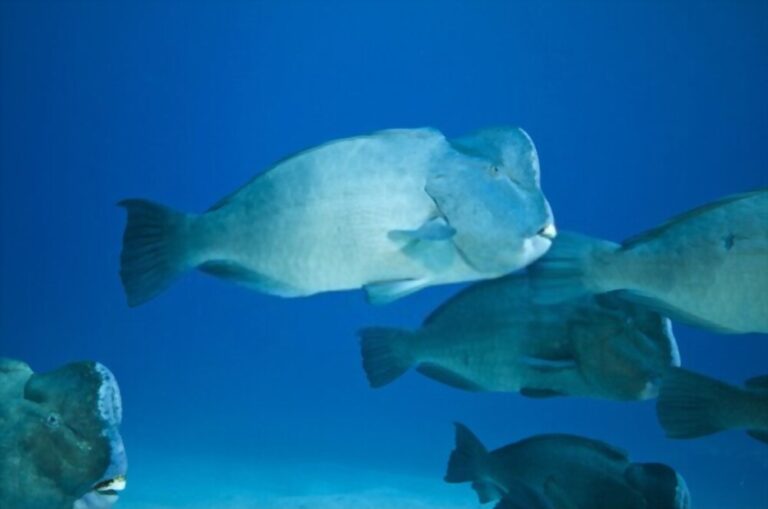Types Of Dartfish- List Of Most Popular Dartfish Species
The darts are tropical fish and have their origin in the Indo-Pacific Ocean. They are found in water as shallow as just 5 feet and as deep as 200 feet, where they inhabit the sandy bottom with rocky and rubbly slopes around.
All the species of dartfish own burrows in the sand. These burrows shelter them for hiding from predators and to sleep at night as well.
But the most exciting thing is that they don’t make their burrows. Instead, they use those made by other bottom dwellers, such as mollusks, worms, shrimps, and sand gobies. We will discuss the 4 most popular types of dartfish in this post.
1. Blackfin Dartfish
The blackfin Dartfish is also known as scissortail goby or scissortail dartfish. The appearance and coloration perfectly match up with its common names. It is named blackfin because of the dark color of its caudal fin on either of its sides.

The middle portion of the caudal fin is crystal clear and forms a ‘V’ shaped scissor-like appearance. Thus, giving this fish another common name of scissortail dartfish.
The head of this fish is white while the rest of the body is verily intensified with blue color. The upper half is lightly pigmented, and the lower half is dark blue. This fish reaches a maximum of 5.5 inches in length.
They are completely reefed safe and are extremely timid with peaceful nature. They can’t stand any level of aggression, and even a small quick movement by any other fish can scare them out.
Therefore, they must be housed with other peaceful species of the same size as them. They are very active fish and need plenty of space to dart around. A minimum tank size of 30 gallons is recommended to comply with their active nature.
As far as feeding is concerned, they should be fed with various mixed foods multiple times a day. They are very active and exhibit a fast metabolism.
Their balanced diet consists of live frozen and dried foods, including small frozen crustaceans such as artemia, copepods, Mysis shrimp, krill, and brine shrimps. Make sure to chop up the frozen food finely.
They should also be given flakes and pellets from time to time. This will add to the nutritious value of their diet.
Catalina Goby Care Guide: Size, Lifespan, Feeding, and Tank Requirements
2. Lined Dartfish
The Lined dartfish or Pterelotris grammica is a beautiful variety of dartfish which exhibits unique coloration.

They have bluish-grey bodies with orange-yellow and violet lines running horizontally along the length of the body and fins. It is given the common name of lined fish because of these prominent lines.
The dorsal fin with a wing-like appearance and caudal fin exhibiting yellow tint along the edges add to their beauty. With their slender bodies, they can reach a maximum of 4 inches long.
The line dartfish is not very common in the aquarium trade, and it is rarely seen in the Asian markets. It is not that easy to catch them from the wild because they inhabit the sandy bottoms making up the vertical grooves far away from the coral reefs.
They are extremely docile, timid, and they cannot stand the hustle of the tank. Therefore much consideration is needed to put this rarely available fish in housing. Tankmates of similar size, temperament, and behavior should be chosen to house along with them.
The minimum tank size recommended for them is 30 gallons. However, larger aquariums with plenty of swimming space and a good amount of rockwork should be preferred.
The most important thing in setting up a tank for them is providing them with plenty of hideouts. The PVC pipes stuck inside the thick substratum glued with each other forming channels like burrows serve their shelters.
They should be fed with live, frozen, and dried foods to balance up their nutritional requirements. The best foods for them include live or frozen Mysis shrimp, brine shrimp, artemia and.
Pellets and prepared foods should also be added to their diet. They should be given small amounts several times a day.
3. Blue Gudgeon Dartfish
The Blue gudgeon dartfish or Ptereleotris Heteroptera is enormously beautiful found widely in the Indian and Pacific oceans’ reefs. What sets them apart from other dart varieties is their slippery, lustrous, and elongated slender bodies.

They exhibit very soft coloration. They have blue bodies with somewhat greyish reflections.
The only main thing on their colored bodies is a patch of black stain on the caudal fin with a yellowish tint along its margins of the stain. They attain a maximum length of about 5-6 inches.
This harmful variety of dartfish can be a magnificent addition to your aquarium but need very fundamental Dartfish Care requirements.
As we already know, they get the name dartfish because of their darting nature in the food quest. Therefore, they must be kept in a tank of a minimum size of 30 gallons.
A larger tank with plenty of rockwork should be preferred. This playful fish loves to swim and weave in and out of the rocky caves.
A thick sandy substratum with PVC pipes’ channels accounts for the burrows into which they dart in and out. Being docile and timid, the preferred tank mates are those having the same temperament as them.
They should be fed twice a day. Finely chopped meaty food items such as Mysis shrimps, brine shrimps, krill, artemia, and bloodworms are the best food staple for them. Pellets and prepared foods should be given in small proportions as well.
4. Zebra Barred Dartfish
The Zebra dartfish P. Zebra is also known as Chinese zebra goby, is the most attractive and the most magnificent fish among all other dartfish varieties.

Their tube-like metallic green bodies with pink columns that run vertically all over their body make them the most eye-catching dart variety.
The zebra dartfish is faint-hearted and is usually seen swimming above their burrow or the substrate. They exhibit rapid drying movements on being threatened.
The minimum tank size recommended for this 6 inches long fish is 30 gallons. It is always best to keep them in shoaling groups. A single zebra dartfish doesn’t look as fascinating as the group of them producing beautifully aligned movements.
Frozen foods work well with the zebra dartfish. They readily accept the finely chopped frozen shrimps, krill, and other crustaceans. You can also feed them flakes occasionally.
Provide them food in the water’s mid-levels as they have a really weak approach to getting the food from the surface.
What Do Butterfly Fish eat? A Complete Diet Guide
Summary
To summarize all this detailed discussion on the well-deserving fish group, let’s admit that the darts are lovely. Their glowing bodies, slender shapes, smooth texture, glider fins, and peaceful behavior.
In short, their behavior is worth watching. If you want more of your dartfish activity, house them with tank mates that don’t stress them to the crevices all the time.
The name dartfish is generally assigned to various species belonging to the subfamily ptereleotrinae of the family Microdesmidae. Dartfish is a diverse group of fishes.
This diversity is because of the taxonomic branching of genera of the subfamily ptereleotrinae. Such diversity comes with many variations in appearance, markings, colorations, mostly of orange, red, yellow, blue, purple-green, and black colors.
This is why these fishes are known by several common names like firefish, wormfish, ribbon goby fish. These fishes have slim bodies, which give them an overall eel-like appearance.






